Walking to “the spot” hoping to land a lake trout for the Western Native Trout Challenge. Daniel A. Ritz photo.
Chucking and ducking heavy lines to check the lake trout off the list
Daniel Ritz is fishing across the Western United States this summer in an attempt to reach the Master Caster class of the Western Native Trout Challenge, attempting to land each of the 20 native trout species in their historical ranges of the 12 states in the West. You can follow Ritz as he travels across the West by following Trout Unlimited, Orvis, Western Native Trout Challenge and Montana Fly Company on social media using the #WesternTroutChallenge.
With fly fishing on the rise, trout water on the decline and more “How to” and “Five tips to” engagement articles out there than any one angler could ever absorb, it is sometimes difficult to imagine many truly unique and first-time trout experiences are still out there.
We had been spoiled with a sunny day of what could be considered “cruise control” fishing for countless trophy-sized Arctic grayling near Delta, Alaska. We climbed in the truck and Oliver Ancans — the seemingly fearless and apparently fatigue-immune president of the Fairbanks Chapter of Trout Unlimited — started heading south towards the looming Alaska Range.
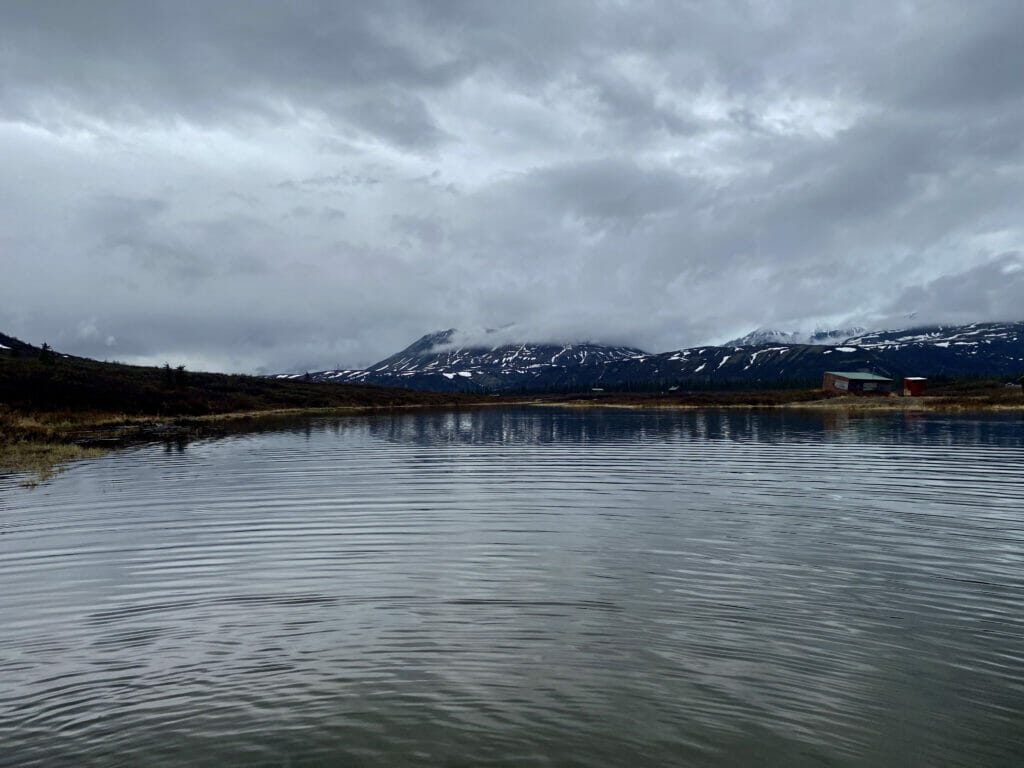
The destination was a lake where Ancans and his friends ice fished for 40-inch plus “lakers” — as the locals call them. As far as he knew, and as far as the almighty Google could confirm, Ancans is the only person to fly fish for lake trout at this unnamed lake.
It was the first week of June, and arriving at the lake in a sideways rain, with clouds that hinted at snow, we were excited to see a small gap alongside the lake shore and the main ice shelf that still covered the overwhelming majority of the lake.
“We’re looking for about 30 feet of open water from the bank,” Ancans explained.
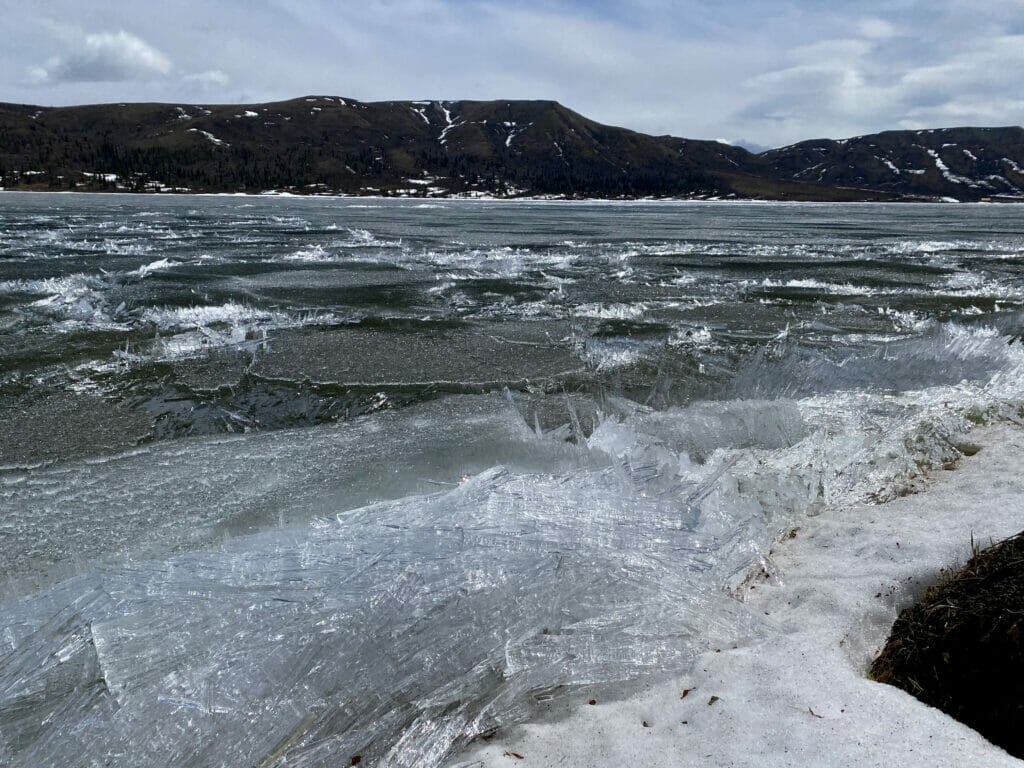
He would have to do a lot of explaining, as I admittedly do not frequent stillwater fisheries and even less frequently fish in the gladiator fashion that we would be practicing for these long lived bruisers that can live well over 40 years, and, on average, exceed the 10-pound mark.
Lake trout spend most of their lives in the deep, cold water of lakes — ideally between 40 and 50 degrees. During the spring ice-off, they cruise the ice line. There, they can enjoy the cold waters they prefer but have ideal access to the bait fish they feed on in the relative shallows.
Our tactic sounded simple — we had to cast a sinking or sink-tip line with a heavy streamer as close to the ice shelf as possible, which by the way, was shifting in the constant howling wind. After the cast, Ancans let the streamer sink until it was close to the bottom and then start stripping line slowly. Then, it’s about hope — will the lake trout’s natural predatory instincts kick in?
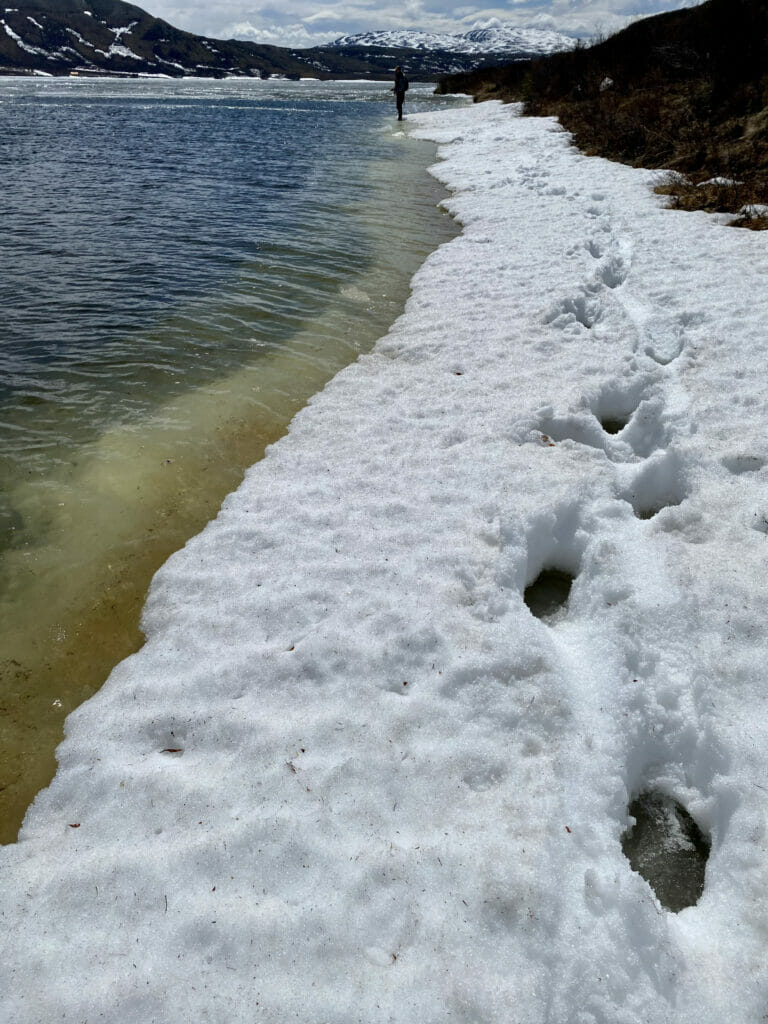
The shore Ancans suggested, with a defined drop off on the lee side of a rocky point, was a few miles from the nearest access with brush directly behind it. This called for an elevated backcast with the heavy line. To make things even more interesting we were doing this while standing on an ice shelf extending from the shore.
As we parked the truck and observed the shoreline and access points the rain turned to sleet.
“This might really, really suck,” I said to Ancans with a halfhearted laugh.
We then laughed together because we knew we were already unquestionably committed to the slog ahead. It would take more than some wind and rain to stop us from spending the next few days attempting to add myself to the very short list of people to have caught lake trout on the fly at this fishery. It’s very easy to feel tough when you are dry.
We crossed an input stream and bushwacked the nearly two miles along an essentially trailess shoreline to the rocky point Ancans said looked like our best option.
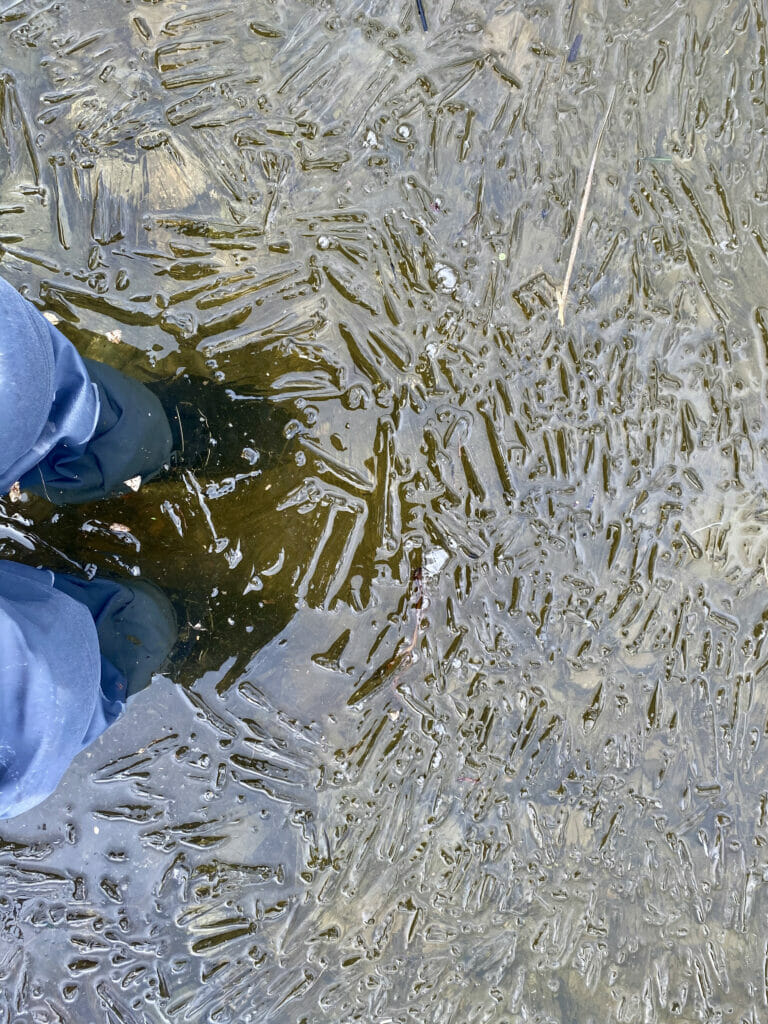
Ancans went first, smoothly hauling his streamer roughly 60 feet like he was casting a size 16 Adams on a spring creek. The fly landed delicately within feet of the ice-shelf.
“All there is to it,” he said casually, and maybe a little mockingly.
After promptly hooking my beanie and throwing it into the icy water on my first cast and then clear cutting the bank of brush behind me on the following half dozen, I began to get the whitefish imitation where it needed to be.
For hours, we combed the banks. Cast. Wait. Let it sink. Slowly, agonizingly slowly strip it back all the way to your feet. Reset. Cast. Do it all again. To avoid the small floating ice particles from forming an iceberg of sorts around our feet, we had to shuffle our feet just to avoid forming an island and becoming a human popsicle.
Roughly two hours after first arriving at our point, the stout 8-weight I was fishing with doubled over, hammered by something large beneath the dark green surface of the water. I imagined it was a massive laker, crashing out from the depths open mouthed much like a crocodile rushes the shore.
I set the hook.
“You’ve got to strip-set!,” Ancans yelled from a few hundred yards down the shore.
I was electrified. The lake trout had hammered the fly, which now hung disheveled on the end of my line.
A few casts later, another take, and this time I was sure to rip hard into the strip set and the fly landed home. The lake trout, as they are known to do, immediately plummeted, diving back to the safety of the depths.
“Give it line! If it wants to run, you’ve gotta’ let it run,” Ancans screamed, somehow sprinting down the ice shelf toward me. I swear he must have been wearing cleats. Why didn’t anyone tell me to bring my cleats?
After a series of runs the 25-inch and maybe 8- to 10-pound laker was in the net.
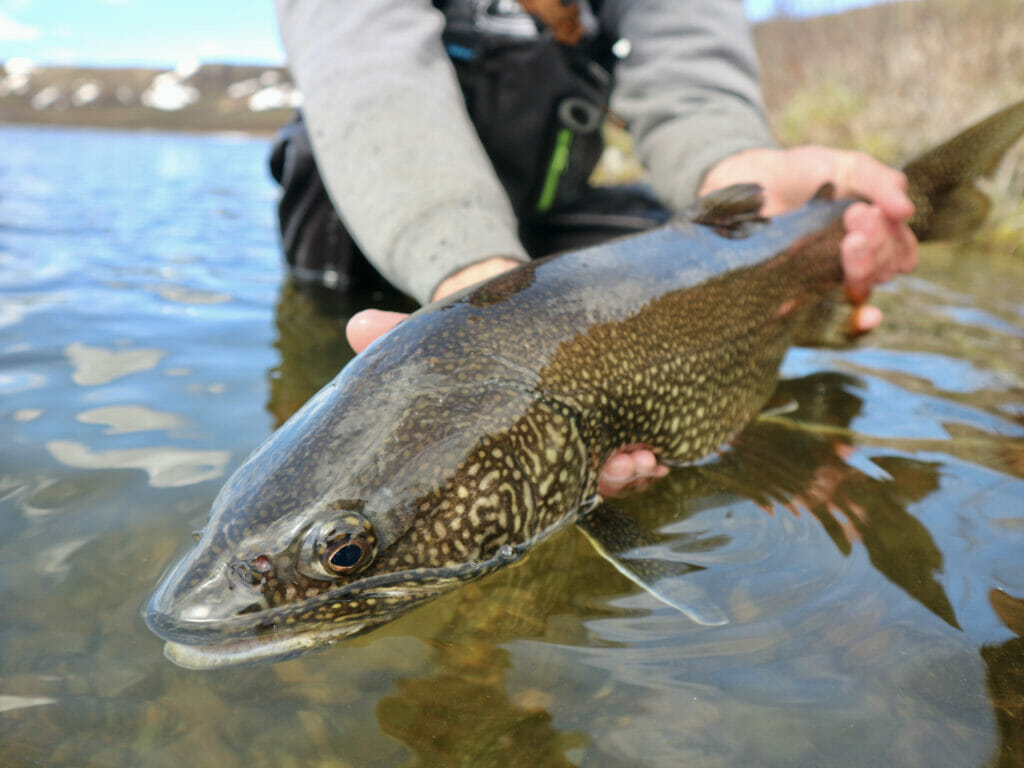
In addition to its length and girth, I was blown away by how stiff, how what I could only call “hard” this fish was. It was cold, and heavy in my hands, it’s skin without wrinkles and it’s mouth revealing sizable, impressive teeth.
Resuscitating the trout, I attempted to absorb the scene of the encounter. Fog covered the summits of the surrounding mountains in all directions, making it impossible to predict the weather within our little microclimate. Sleet fell from the sky, adding to the already thick layer of ice a few dozen yards out from the shore. My waterproof rain jacket had soaked through, and was now a dark shade of green that perfectly matched the frigid lake. My hands, purple, shook just below the surface of the lake.
I was jolted back to reality when a small iceberg hit me, as if kindly asking me to move along.
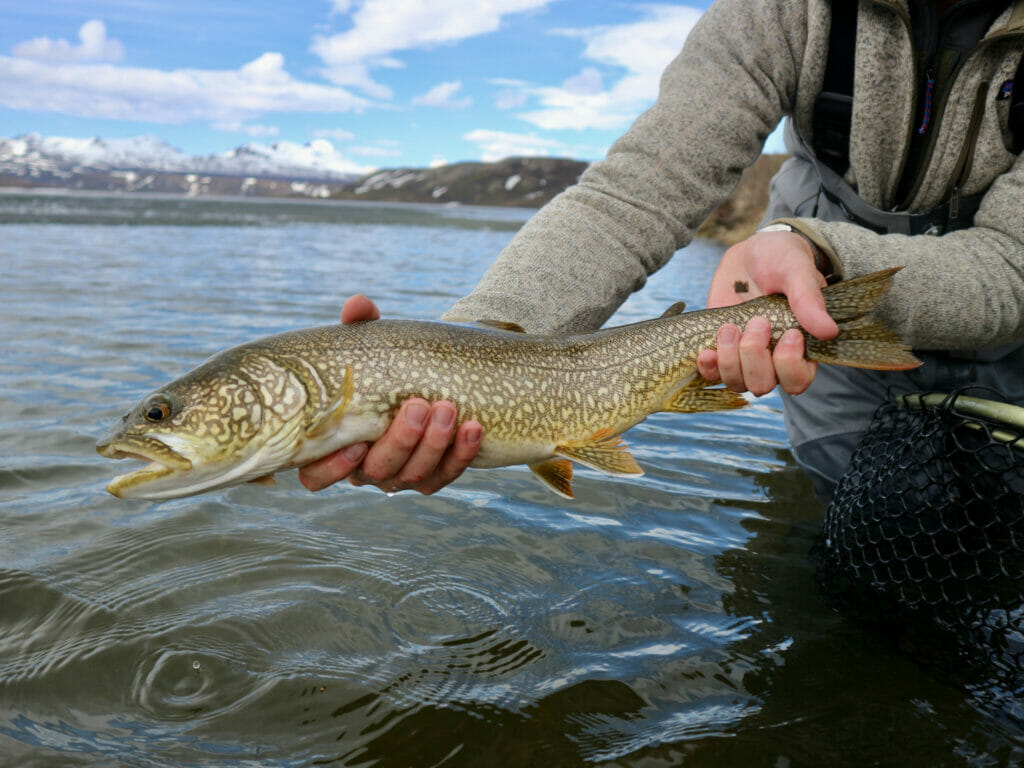
Over the course of the next few days, Ancans and I both landed a number of lakers, including one each of what he would call a “proper” trout. We only humped back to camp to eat, or when we couldn’t feel our feet due to the icy water or our hands due to the never-ending wind.
On day three, as the wind continued to howl we decided to pack up camp. The wind had changed direction overnight, blowing the ice shelf over the portion of the shoreline that had proven productive.
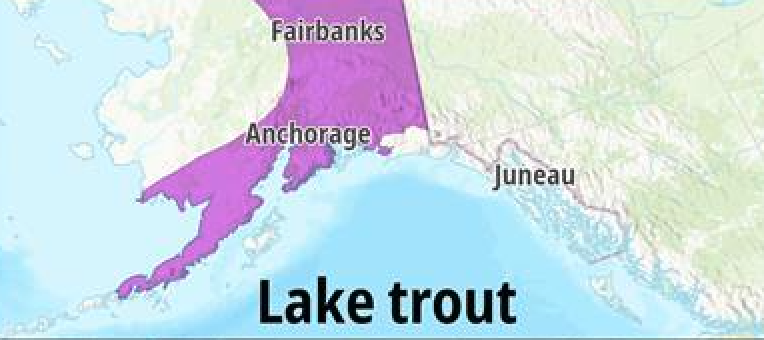
“Next time, I’m going to try over there,” Ancans said, pointing across the shore, always looking forward to his next unknown. His partner Gaby, who had joined us for the last few days, shook her head. I had a feeling this is the way it usually goes.
Living in the northern Rockies, as I do, we are often encouraged (rightfully so) to expand our angling experiences for any one of a number of reasons whether it be for our own enjoyment or the health of the fish. Increasing pressure, increasing water temperature and decreasing water levels all force us to modify our fishing experience for the health of the resource, the well being of the environment, for our own sanity.
It’s often hard to believe there is a novel experience left out in this modern fly fishing world. Not only that, but a novel experience for big, strong, hard-fighting fish.
More than anything else, my experience in the Alaska Range served as a reminder that true discovery remains possible. Not every time, but sometimes, to earn it you might just have to suffer a little bit for it.
I like to call it low altitude sickness. If you expect the most fantastic results from the most easily accessible location with the easiest level of entry, you’ll likely find yourself surrounded by the hordes.
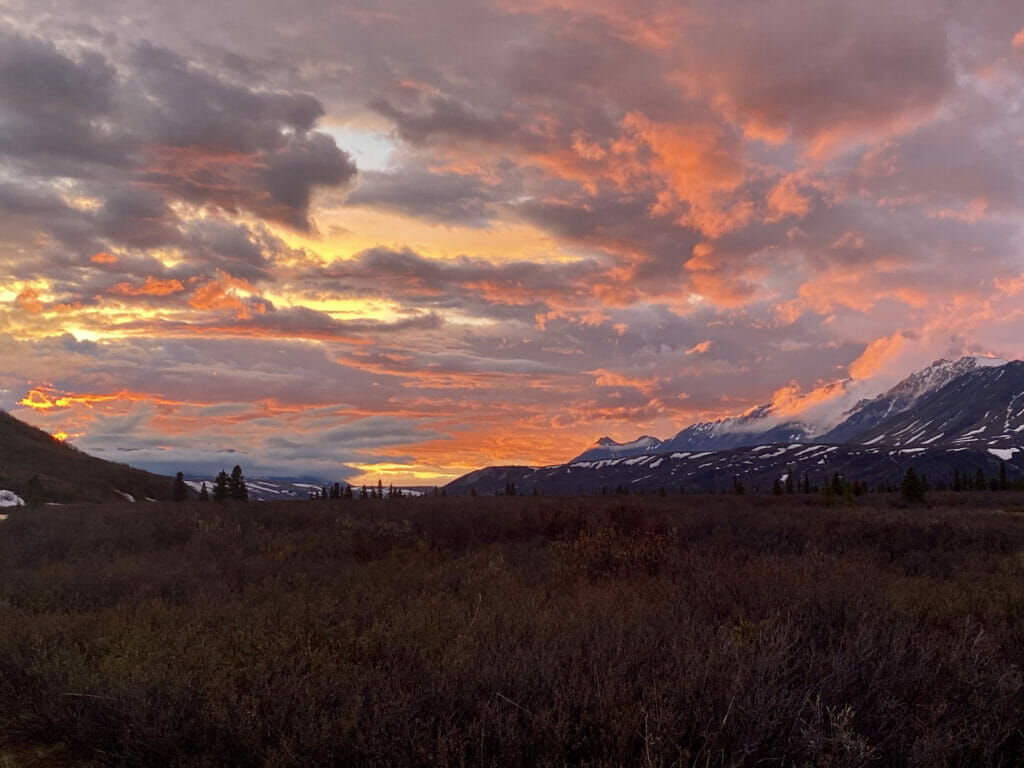
With dogged tenacity, intensive research and a strong casting arm, there are still coldwater opportunities for unforgettable trout if we, as the popular saying in the Marine Corps goes, “embrace the suck.”
“Want to head back toward town and do some grayling fishing?” Ancans said, proving he was human after all.
“Sounds pretty good right now,” I responded.



